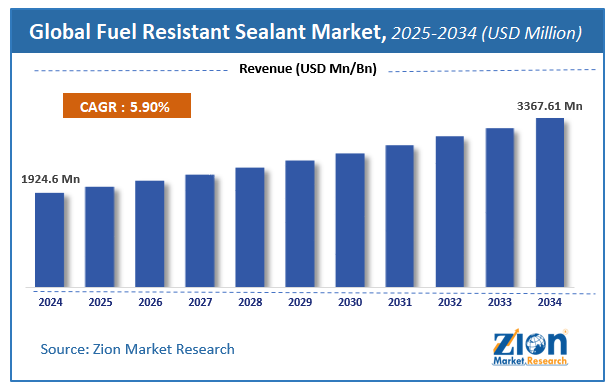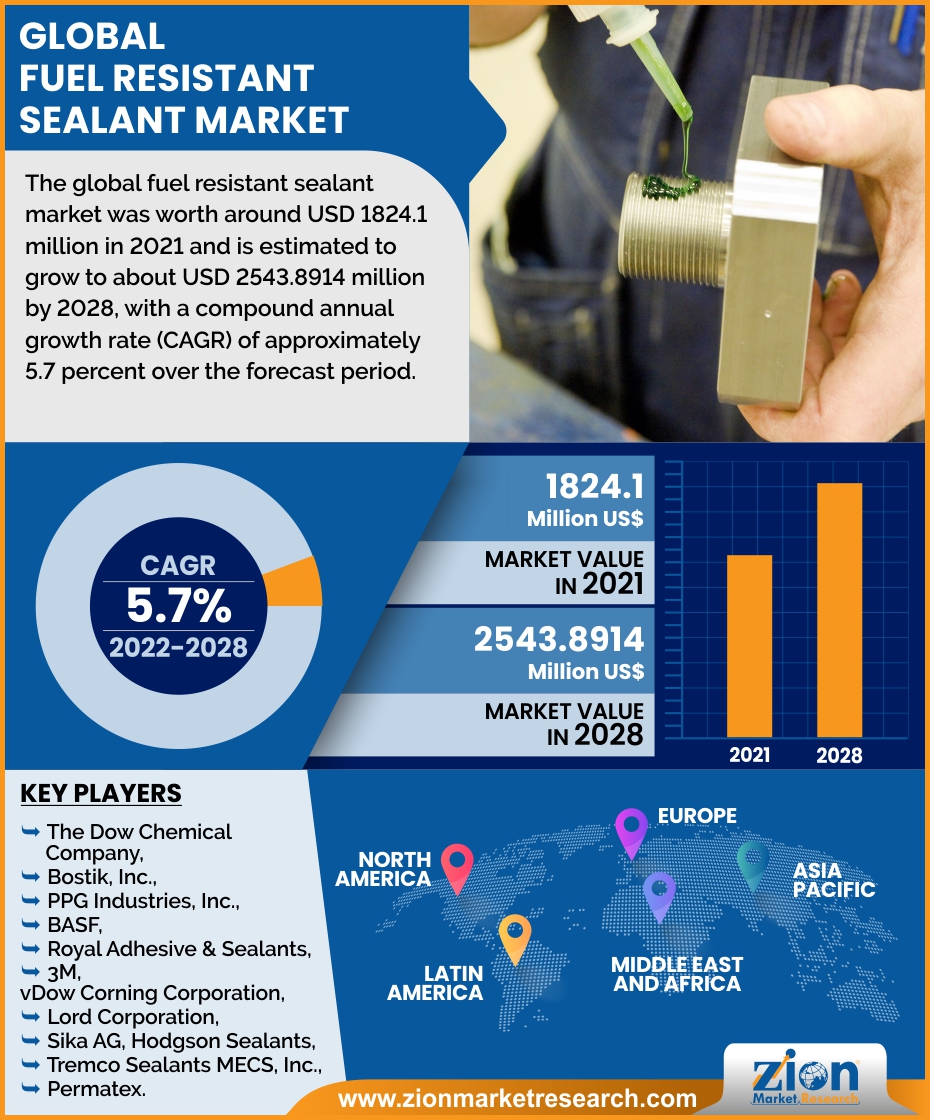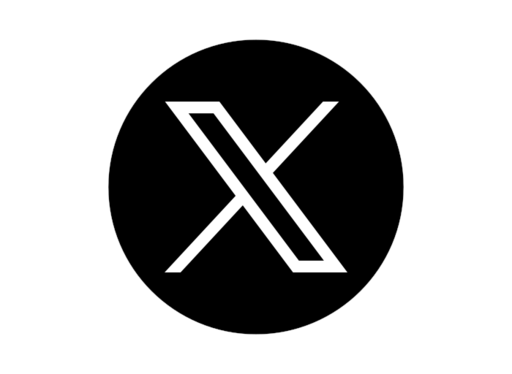Global Fuel Resistant Sealant Market Size, Share, Growth Analysis Report - Forecast 2034

Fuel Resistant Sealant Market By Resin Type (Polyurethane, Plastisol, Silicone, Polysulfide, and Semi-synthetic & Synthetic Resins), By Application (Aerospace, Automotive, and Others), and By Region: Global and Regional Industry Overview, Market Intelligence, Comprehensive Analysis, Historical Data, and Forecasts 2025 - 2034
| Market Size in 2024 | Market Forecast in 2034 | CAGR (in %) | Base Year |
|---|---|---|---|
| USD 1924.6 Million | USD 3367.61 Million | 5.9% | 2024 |
Fuel Resistant Sealant Market: Industry Perspective
The global fuel resistant sealant market size was worth around USD 1924.6 Million in 2024 and is predicted to grow to around USD 3367.61 Million by 2034 with a compound annual growth rate (CAGR) of roughly 5.9% between 2025 and 2034. The report analyzes the global fuel resistant sealant market's drivers, restraints/challenges, and the effect they have on the demands during the projection period. In addition, the report explores emerging opportunities in the fuel resistant sealant industry.
Global Fuel Resistant Sealant Market: Overview
In Global Fuel Resistant Sealant Market Report, Fuel Tank Sealants are high-temperature fuel resistant sealants intended for use on integral fuel tanks with excellent resistance to other fluids such as water, alcohols, synthetic oils, and petroleum-based hydraulic fluids. They exhibit sealing properties with resistance against fuel exposure. Fuel-resistant sealants can function in a wide temperature range of temperatures (-40° to 260°C) and provide resistance against fluids, such as lubes, oil, gasoline, water, and ethanol, along with protection from moisture and dust particles. A fuel-resistant sealant with no hold time provides instant strength, leading to an intensification in production and cost efficiency with improved quality and reduced cost for various applications. Fuel-resistant sealants due to their advanced properties such as their operation at a varied range of temperatures and their usage in several end-use industries have increased their demand. Additionally, the fuel-resistant sealant is used for fuel storage purposes.
Due to the technological advancements in the product, it is widely adopted by several industries as a low volatile organic compound. These fuel-resistant sealants are used in storage tanks with probable exposure to chemicals, like ethanol, gasoline, and crude oil. The market is highly split among big manufacturers with a global reach, and small players actively competing within the country or region. The players with efficient sales networks offer an entire range of products, while small players generally focus on a niche segment of their own, depending upon major customer preferences.
Key Insights
- As per the analysis shared by our research analyst, the global fuel resistant sealant market is estimated to grow annually at a CAGR of around 5.9% over the forecast period (2025-2034).
- Regarding revenue, the global fuel resistant sealant market size was valued at around USD 1924.6 Million in 2024 and is projected to reach USD 3367.61 Million by 2034.
- The fuel resistant sealant market is projected to grow at a significant rate due to rising demand in aerospace, automotive, and industrial applications.
- Based on Resin Type, the Polyurethane segment is expected to lead the global market.
- On the basis of Application, the Aerospace segment is growing at a high rate and will continue to dominate the global market.
- Based on region, North America & Asia-Pacific is predicted to dominate the global market during the forecast period.
Fuel Resistant Sealant Market: Growth Drivers
Demand for fuel storage and requirement of fuel resistant sealants in the automotive sector
A fuel-resistant sealant with no hold time delivers instant strength, leading to an increase in production and cost efficiency with improved quality and reduced cost for various applications. It is used for the effective performance of assets in the automotive sector. The automobile sector has enumerated strong production in China and India, ultimately creating a positive impact on the demand for fuel-resistant sealants. The primary application of a fuel-resistant sealant is to assemble and repair fuel lines, tanks, and joining components exposed to fuels and oils.
Sealants are the chemical substance used to block the passage of fluids in the joints or surface or openings in materials. Fuel resistant sealants show excellent sealing properties with resistant to fuel exposure. These fuel resistant sealants can be used at a wide range of temperatures of about -40°C to 260°C, moreover, it can also offer great resistance to fluids such as water, oil, lubes, gasoline, and ethanol. When fuel resistant sealant is applied on the substrate it transforms into rubber-like elastic substance. However, it can be used in a wide range of applications such as automotive, aerospace, and others.
Fuel Resistant Sealant Market: Restraints
Limited availability and high cost of raw materials
The raw materials for producing fuel-resistant sealant is limited and a major limitation of these sealants is the release of a small amount of acetic acid during the curing process. If the byproducts are not allowed to vanish in the open environment, they may cause corrosion on some metal substrates and ruin the sealant. Moreover, the high cost of raw materials, coupled with environmental concerns are major restraints to the growth of the fuel resistant sealing market.
Fuel resistant sealant market is projected to develop at the fastest growth rate with increased usage in the number of applications across the globe. Rising industrialization in emerging countries like Mexico, Brazil, Indonesia, China, and India is propelling the automotive and construction industry. Therefore, this, in turn, is expected to drive the demand for fuel resistant sealant market. The light-weight property of fuel resistant sealant makes it the most suitable product in the aerospace sector. Moreover, the growing aerospace industry is estimated to propel the demand for fuel resistant sealant market growth. However, fluctuating prices of resins may hamper the market growth of fuel resistant sealant.
Fuel Resistant Sealant Market: Segmentation Analysis
The Global Fuel Resistant Sealant Market is segregated based on resin type and application.
By resin type, the global market is distinguished into Polyurethane, Plastisol, Silicone, Polysulfide, and Semi-synthetic & Synthetic Resins. Polyurethane is anticipated to be the fastest-growing resin type owing to its wide applications in several end-user industries. Polyurethane is a polymer composed of organic units joined by carbamate (urethane) links.
By Application, the global market is distinguished into Aerospace, Automotive, and Others. The automotive segment is the most dominating application and is expected to show significant growth in the near future. Moreover, growing automotive sectors across the globe are likely to boost the demand for fuel-resistant sealants for various purposes.
Fuel Resistant Sealant Market: Report Scope
| Report Attributes | Report Details |
|---|---|
| Report Name | Fuel Resistant Sealant Market |
| Market Size in 2024 | USD 1924.6 Million |
| Market Forecast in 2034 | USD 3367.61 Million |
| Growth Rate | CAGR of 5.9% |
| Number of Pages | 155 |
| Key Companies Covered | The Dow Chemical Company, Bostik Inc., PPG Industries Inc., BASF, Royal Adhesive & Sealants, 3M, Dow Corning Corporation, Lord Corporation, Sika AG, Hodgson Sealants, Tremco Sealants MECS Inc, Permatex,, and others. |
| Segments Covered | By Resin Type, By Application, and By Region |
| Regions Covered | North America, Europe, Asia Pacific (APAC), Latin America, The Middle East and Africa (MEA) |
| Base Year | 2024 |
| Historical Year | 2020 to 2023 |
| Forecast Year | 2025 - 2034 |
| Customization Scope | Avail customized purchase options to meet your exact research needs. Request For Customization |
Fuel Resistant Sealant Market: Regional Landscape
The Asia Pacific is anticipated to have the highest growth rate in the global fuel-resistant sealant market. The Asia Pacific and Latin America are rapidly developing regions of the fuel-resistant sealant market. Demand for fuel-resistant sealants is rising rapidly in the automobile industry in Latin America. This is boosting the fuel-resistant sealant market in the region. The North American and European markets are likely to expand at a slow pace soon. The growth of the aerospace sector is estimated to propel the fuel-resistant sealant market in these regions. The Middle East & Africa is anticipated to offer vast potential for the fuel-resistant sealant market, led by the developing oil & gas industry in the region.
Fuel Resistant Sealant Market: Competitive Analysis
The report provides a company market share analysis to give a broader overview of the key market players. In addition, the report also covers key strategic developments of the market, including acquisitions & mergers, new product launches, agreements, partnerships, collaborations & joint ventures, research & development, and regional expansion of major participants involved in the fuel resistant sealant market on a global and regional basis.
The global fuel resistant sealant market is dominated by players like:
- The Dow Chemical Company
- Bostik Inc.
- PPG Industries Inc.
- BASF
- Royal Adhesive & Sealants
- 3M
- Dow Corning Corporation
- Lord Corporation
- Sika AG
- Hodgson Sealants
- Tremco Sealants MECS Inc
- Permatex
The global fuel resistant sealant market is segmented as follows;
By Resin Type
- Polyurethane
- Plastisol
- Silicone
- Polysulfide
- and Semi-synthetic & Synthetic Resins
By Application
- Aerospace
- Automotive
- and Others
By Region
- North America
- The U.S.
- Canada
- Mexico
- Europe
- France
- The UK
- Spain
- Germany
- Italy
- Rest of Europe
- Asia Pacific
- China
- Japan
- India
- Australia
- South Korea
- Rest of Asia Pacific
- The Middle East & Africa
- Saudi Arabia
- UAE
- Egypt
- Kuwait
- South Africa
- Rest of the Middle East & Africa
- Latin America
- Brazil
- Argentina
- Rest of Latin America
Table Of Content
Methodology
FrequentlyAsked Questions
Leading players in the global fuel resistant sealant market include The Dow Chemical Company, Bostik Inc., PPG Industries Inc., BASF, Royal Adhesive & Sealants, 3M, Dow Corning Corporation, Lord Corporation, Sika AG, Hodgson Sealants, Tremco Sealants MECS Inc, Permatex,, among others.
Choose License Type
RelatedNews
HappyClients
Zion Market Research
Tel: +1 (302) 444-0166
USA/Canada Toll Free No.+1 (855) 465-4651
3rd Floor,
Mrunal Paradise, Opp Maharaja Hotel,
Pimple Gurav, Pune 411061,
Maharashtra, India
Phone No +91 7768 006 007, +91 7768 006 008
US OFFICE NO +1 (302) 444-0166
US/CAN TOLL FREE +1 (855) 465-4651
Email: sales@zionmarketresearch.com
We have secured system to process your transaction.
Our support available to help you 24 hours a day, five days a week.
Monday - Friday: 9AM - 6PM
Saturday - Sunday: Closed







